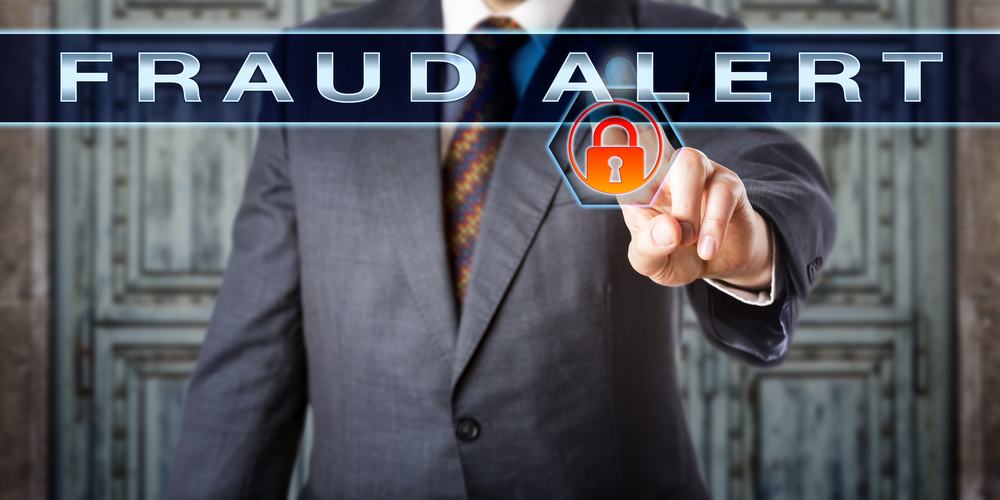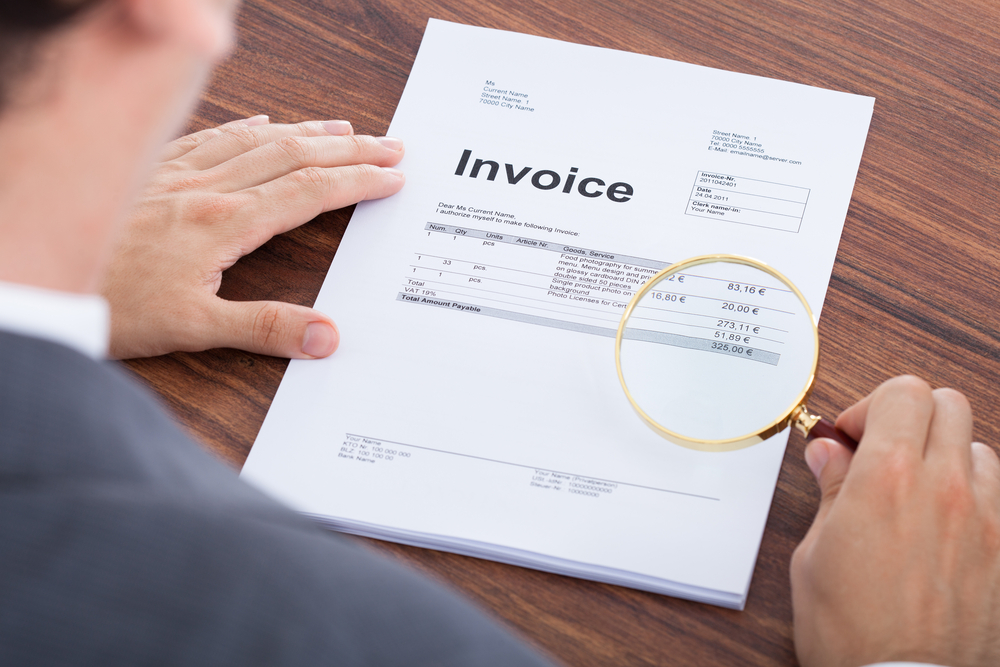Catching Invoice Fraud: Closing the P2P Loop with Automated Invoice Processing

Invoice fraud is just one of several occupational fraud schemes that cost companies nearly $7 billion in 2018 alone according to a recent study by the Association of Certified Fraud Examiners (ACFE). This astounding figure proves just how devastating the problem can be. If you think your company is exempt, you might want to think again because scammers target businesses of all industries and sizes. The same study reported that more than 70% of fraud cases occurred at for-profit organizations. Of these companies, 42% of them were private companies while 29% were public, and unfortunately the smaller the company, the more devastating the losses.
The most common invoice processing scams target vulnerabilities present in just about any company. From a lack of communication to poor process controls, scammers can find any weakness and exploit it for a profit. The accounts payable process in most companies is manual, has dense layers of approval, and contains cumbersome verification of whether the goods were delivered. Not only that, but there is also minimal tracking to ensure the right parties are involved in reviewing the document before it gets approved. As a result, it gets routed from one person to the next with little assurance that it has been validated.
Here are some of the common types of fraud and tips to help keep your company safe.
What is Invoice Fraud?

Invoice fraud is a problem so deceptive, that even the most diligent of companies can fall prey to this malicious attack. In simple terms, invoice fraud is when a third-party submits fake invoices to a company with the intent to extract money. Often, companies are unaware of the scheme and unwittingly pay for goods or services that were never rendered.
The scheme starts long before the first phony invoice ever arrives. Fraudsters spend hours learning about the internal workings of a company. Specifically, they study the company’s regular suppliers, how much the company typically spends with the vendor, and when the vendor submits their bill. Then, using this information, the scammer builds an elaborate scheme that involves sending fake bills that appear to be from the company’s regular supplier.
Spotting these fraudulent bills is extremely difficult because they appear to be legitimate documents from real suppliers. However, scammers go to great lengths to conceal their scam. They may change an account number, slightly change the address on the document or submit it for such a low amount that it won’t trigger any alarms. By the time anyone catches on, the fraudster has already gotten away with hundreds if not thousands of dollars. The ACFE study showed that the median duration of occupational fraud schemes was 16 months. If your company was targeted, can you imagine how much money would be lost in that amount of time?
How Does Invoice Fraud Happen?
Invoice fraud is so successful because the scammers find and exploit a weak point within the company’s AP process. The weakness stems from poor controls and a lack of communication between departments. In many companies, AP is still a manual and paper-laden process. Invoice fraud is financially prosperous for scammers because they are able to identify and successfully exploit the weak points within a company’s AP process. Arriving through a variety of channels, including email, postal mail, fax, or inter-office deliveries. What happens next is often an ad hoc process that involves passing the document to various individuals throughout the company. Whether it makes it to the correct individual(s) is questionable. Even if the document does reach the appropriate parties, there is a lack of tracking to ensure it gets approved on time. By the time the document returns to AP, it is often nearing the due date or worse yet, overdue. Scammers rely on this to create a sense of urgency that causes companies to pay the bill without verifying them hastily.
Another common scenario in some companies is that the department that ordered the goods has little to no involvement in the AP process. Worse, is when the designated approver is a busy department head who has no insight into inventory and little time to verify. Thus, they rely on word-of-mouth or the assumption that the product was delivered.
Even those companies with a more sophisticated approval process run the risk of getting hit with phony invoices. While they may have some controls and procedures in place, there is always the chance that each approver takes for granted that the next person in line will read and validate the bill. In each of these scenarios, there is no verification that the bill matches the Purchase Order (PO) or even if the items were delivered.
Types of Scams and How to Spot Them

Invoice scams involve a variety of tactics that can sneak a phony invoice past even the most experienced accounts payable teams. Thankfully, there are red flags that can make spotting them easier.
False Invoices (i.e. phishing emails)
The most glaring of the scams is that of false invoices. They appear to be for legitimate goods or services. In this case, however, no product was ever delivered. What makes this trick so difficult to spot is that the bills come from vendors the company regularly uses. Knowing this, the scammers rely on the chances that no one will question the validity of the bill. One giveaway of this tactic is when the goods listed on the bill can’t be accounted for in inventory, or there is no PO to match the bill in question.
Inflated Invoices
Another popular tactic is to submit a phony invoice with inflated prices. While this may seem easy to spot, it usually isn’t. Typically, the amounts aren’t inflated significantly enough to raise red flags. The idea here isn’t to get a big payout. Scammers rely on volume to get away with as many small amounts possible. The easiest way to spot this type of scam is to review the purchase order. The price on the PO may be slightly different than what shows up on the bill.
Invoice Scams
An obvious sign of this invoice scam is when numerous payments are made in the same period to the same vendor, or the fraudster may repeatedly submit multiple bills with the same product, amount, invoice number, and date.
Outside of the above warning signs, other general items can point to suspicious activity. Sometimes the fraudsters use legitimate account numbers but may change one digit. The same holds for contact information. Contact information is a piece of data that often gets overlooked when validating bills. Therefore, scammers know they can get away with changing the address or a phone number on the document without raising too much suspicion. Another red flag is the domain of the company email address or website. If the domain previously showed as a .com, but suddenly shows as a .org, you may want to check further into things.
A common theme among phony invoices is they sometimes show up in even amounts. Rarely are goods and services charged in nice round numbers. Given that, bills that total even amounts should be questioned.
Lastly, educating staff about Benford’s law can go a long way towards spotting fraud. Benford’s Law states that invoice data follows a specific sequence of numbers. Specifically:
- The number 1 should show up 30% of the time.
- The number 2 should show up 17% of the time, while
- the number 9 should only show up 4.5% of the time.
Thus, if you start noticing numbers appearing more often than they should, it’s time to investigate further.
How to Protect Your Company
Although invoice fraud is prevalent, there are things you can do to prevent your company from becoming a victim. Prevention starts with a more thorough review process that can filter out the problem. Three-way matching is a technique that requires the invoice to be matched with the purchase order and the receipt of the goods.
Establish regular points of contact at your regular suppliers. That way, you can do a quick check should you spot something unusual. Also, track vendor activity. Any increased activity for a vendor should be further scrutinized. For example, if a vendor usually submits ten bills a month, but suddenly starts submitting 30 per month, it might be time to check things out.
Next, scrutinize any requests to pay a vendor with a different payment method. Always call and check before submitting any payment that you question. Perhaps the most effective method in implementing all these techniques is through AP automation.
How AP Automation Can Help
Combating invoice fraud with AP automation is about verifying invoice information, knowing if the order was received and the PO is accurate. It’s about making the team run as efficiently as possible by allowing them to accomplish more in less time and hopefully with fewer errors. Stampli’s AI-powered accounts payable software significantly increases visibility and communication about invoices throughout the company. With Stampli, there is a centralized place for receipt of bills. That way, every bill enters the company through a standard method that makes it easier to spot something that doesn’t quite fit. Next, the software automates the approvals process by routing the invoice to the appropriate parties. Reviewers, both inside and outside the company, can view, add supporting documents, and comment on invoices. Lastly, AP automation comes with built-in AI technologies that identify discrepancies between invoice data and supporting documentation, while also recognizing instances of fraud and notifying the appropriate parties.
Learn more about how Stampli can help strengthen your defenses against invoice fraud by talking to one of our AP experts today.